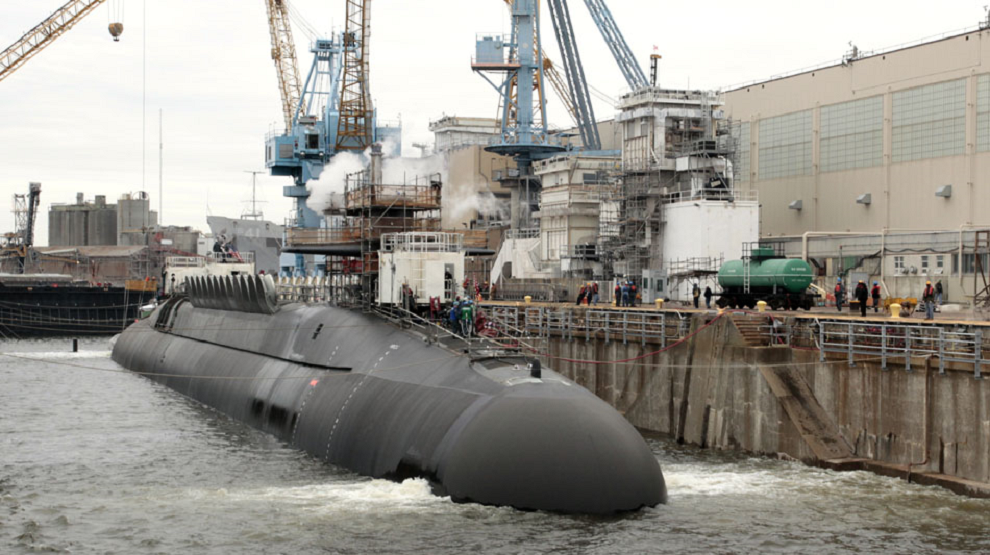
A submarine undergoes maintenance at the government-owned Norfolk Naval Shipyard.
WASHINGTON: The Navy’s massive directorate in charge of building, repairing, supplying, and sustaining the service’s 292 warships is embarking on a new effort to plug holes in its networks, months after a scathing Navy-wide internal report that found the service doesn’t have its cyber house in order.
An April 10 email to the force from Adm. Thomas Moore, head of the Naval Sea Systems Command, (NAVSEA), said in the wake of “several significant cyber issues this fall and winter it was clear we were not organized and aligned properly” to deal with the threats, leading to some changes. The email was obtained by Breaking Defense.
Moore named Rear Adm. Huan Nguyen, deputy commander for cyber engineering at NAVSEA, to head up the new effort which he said “will be the single, accountable authority within NAVSEA” for cyber security and digital initiatives.
NAVSEA manages the Navy’s shipyards that build and repair surface ships and submarines, along with overseeing the equipping of the force — meaning the command is in close and constant contact with private companies in the supply chain who practice varying degrees of cyber hygiene, making them prime targets for hackers.
Moore wrote that the command hasn’t been keeping up with “rapid changes in the digital/data analytics world with the sense of urgency needed in this era of Great Power Competition.”
The move merges NAVSEA’s chief information officer shop with the IT mission as a precursor to other “strategic changes in how we do business” that are coming in the future. It’s not clear what those changes might be, but Navy offices across the fleet are looking to cut costs and merge activities as part of the effort to shave $40 billion from its overhead over the next five years.
The review was announced in the wake of the release of the controversial fiscal 2021 budget, which included plans to slash $4 billion from the Navy’s shipbuilding budget and $3 billion from its top line, compared to last year.
Last year, then-Navy Undersecretary Thomas Modly — before becoming acting secretary and flaming out spectacularly this month — said China, Iran and Russia are “relentlessly hacking into our systems…they’re trying to come at us in every possible way that they can.” It has been widely reported that Chinese hackers have been punching their way into the networks of US defense contractors, and making away with classified data on new weapons systems like a supersonic anti-ship missile and other sensitive plans for submarines.
The Navy’s 2019 Cyber Readiness Review offered a scathing critique, calling weak spots and persistent holes in the system an “existential threat” to the existence of the Navy and Marine Corps. The unsparing 80-page assessment concluded the Navy is under “cyber siege” and has so far failed to secure its IT systems.
Iran says it shot down Israel’s attack. Here’s what air defense systems it might have used.
Tehran has been increasingly public about its air defense capabilities, including showing off models of systems at a recent international defense expo.


























